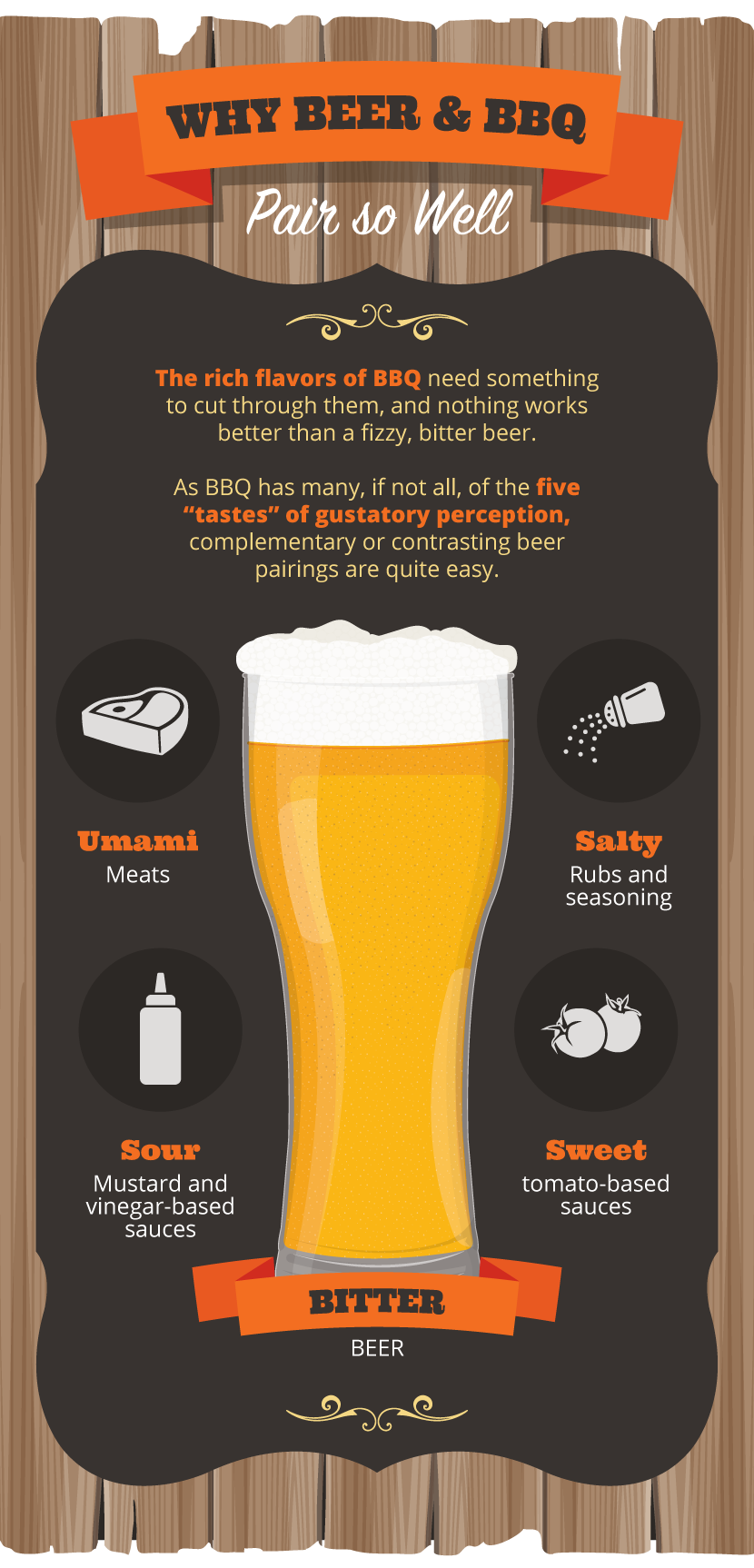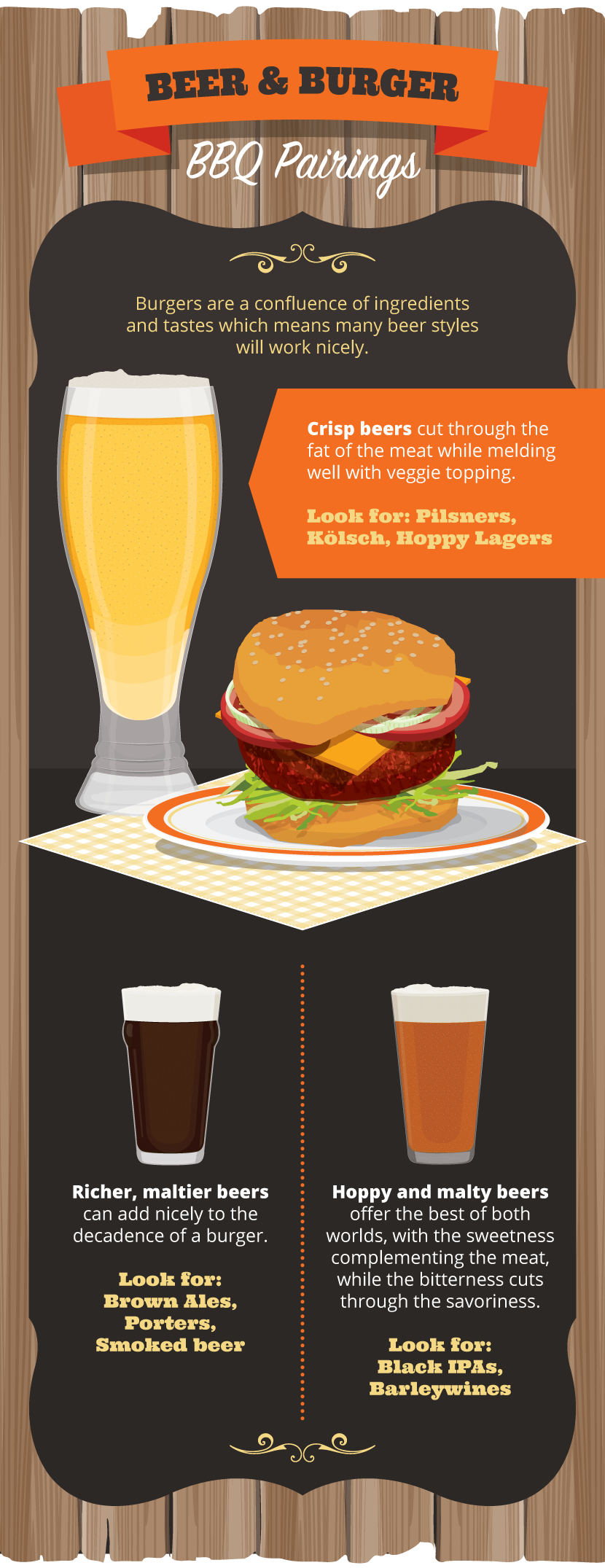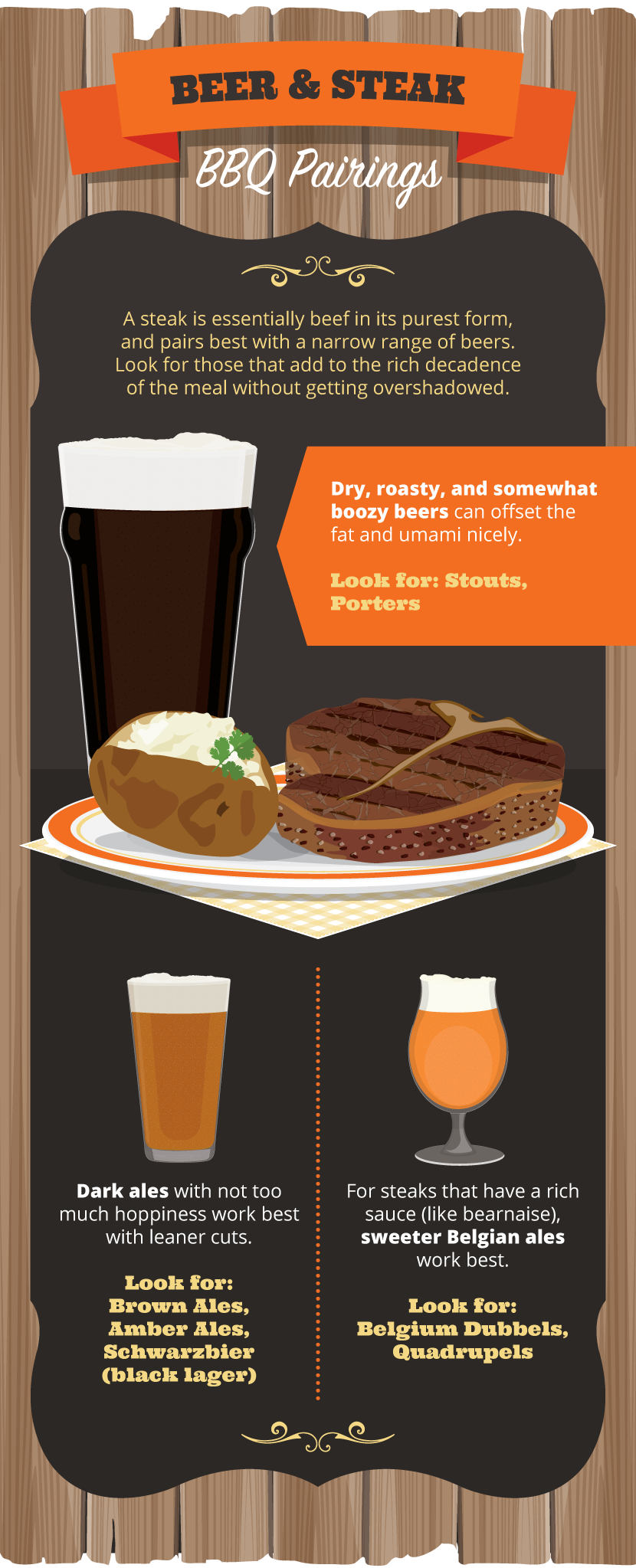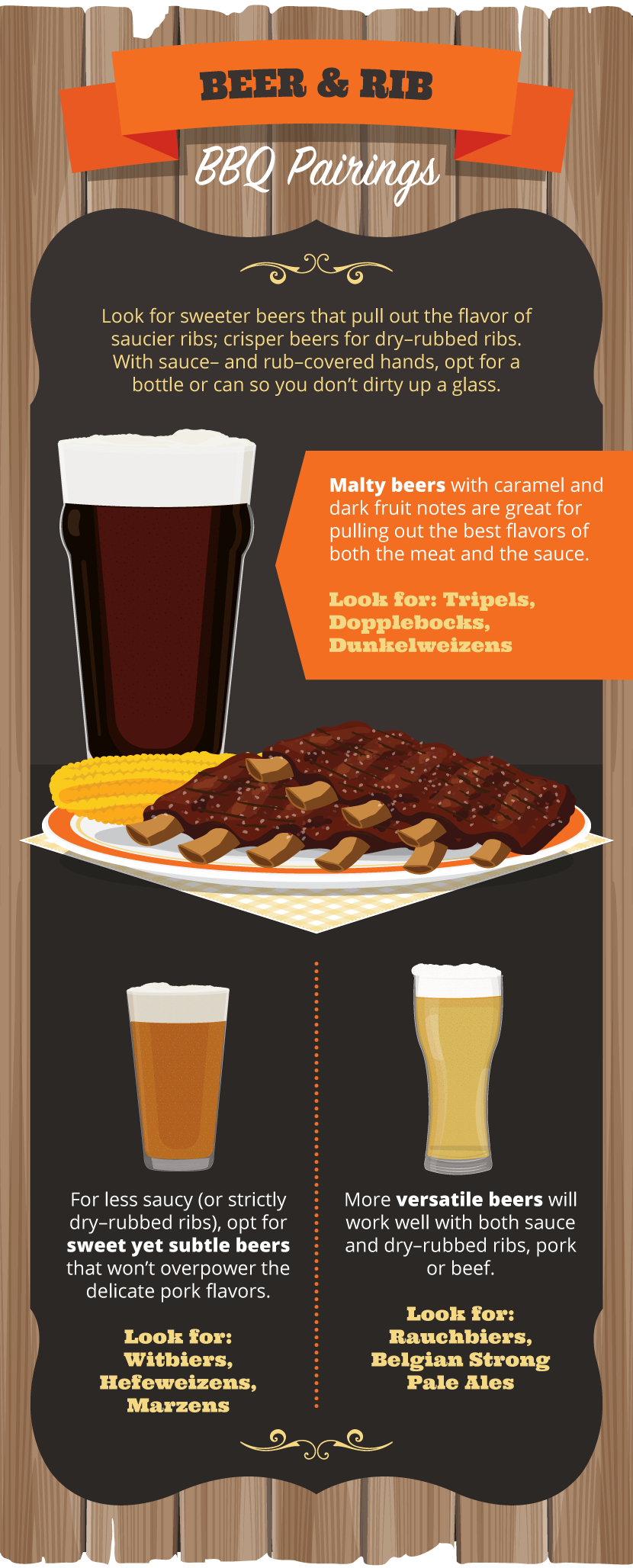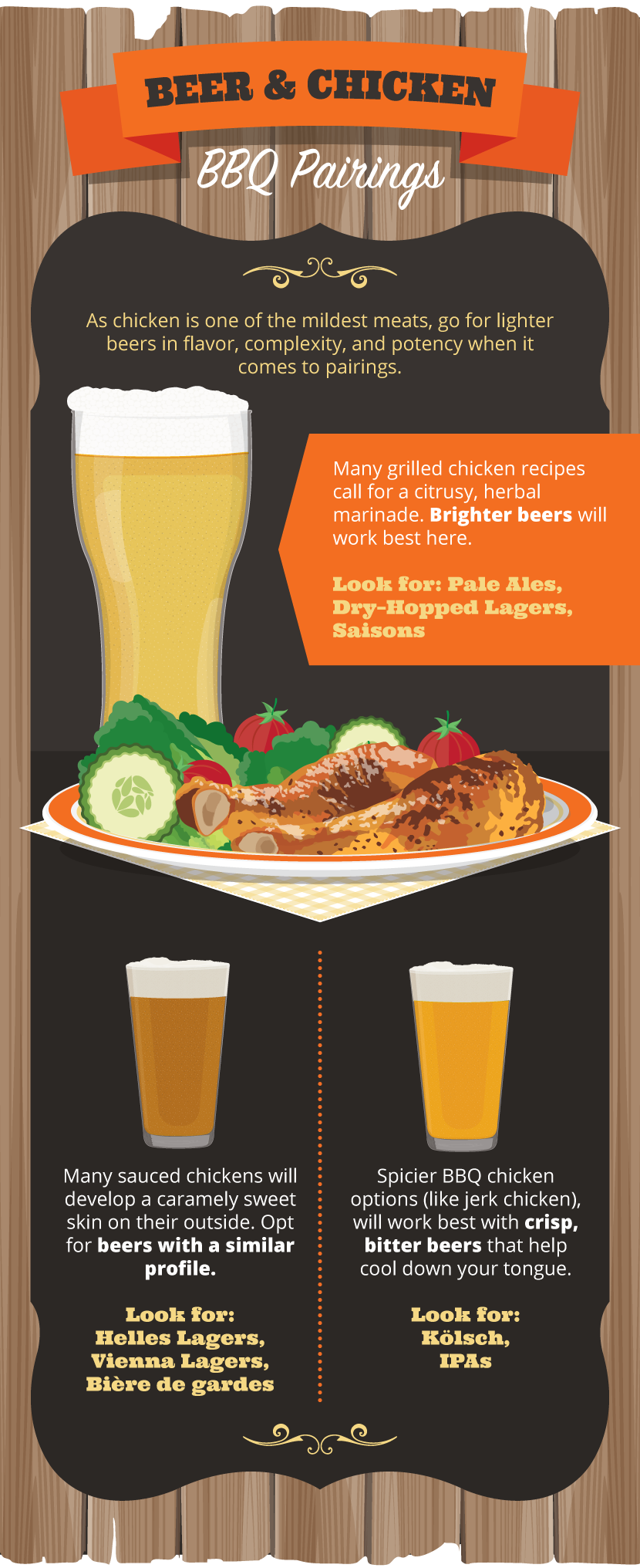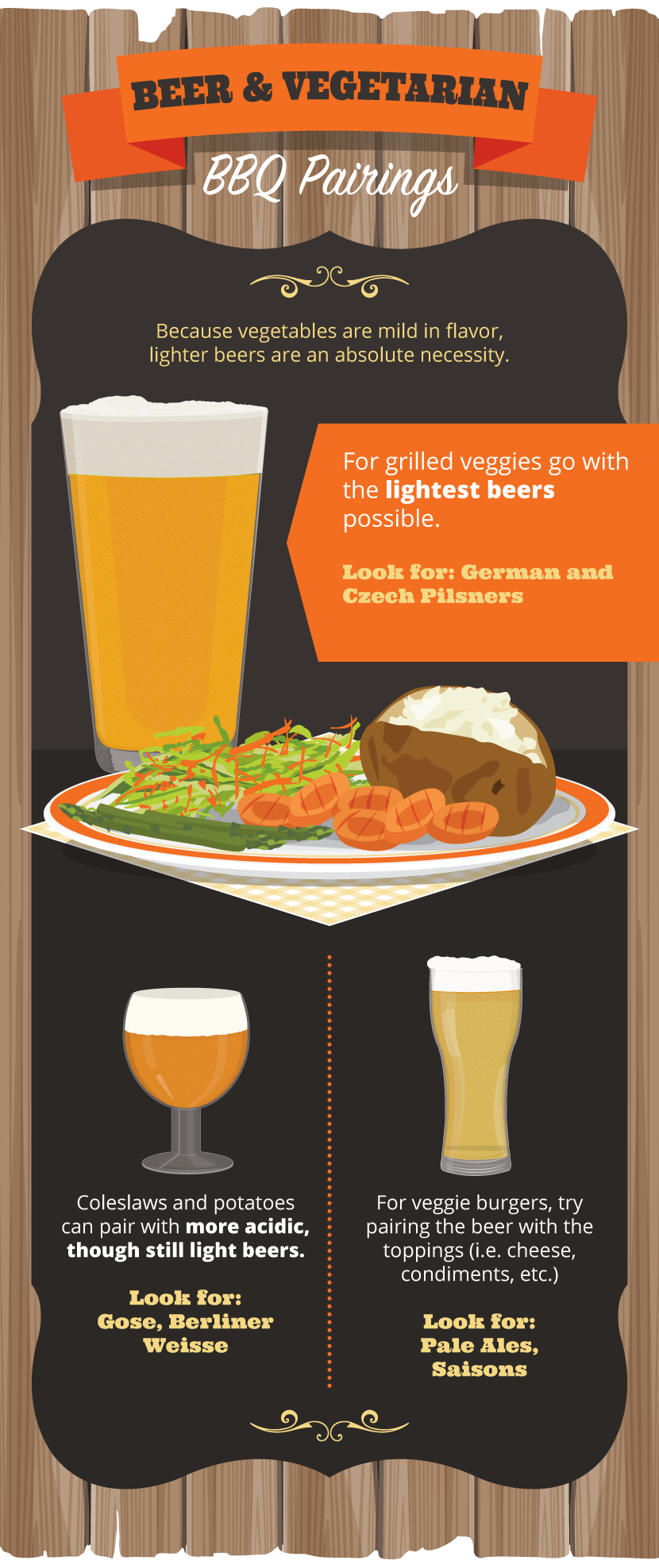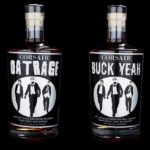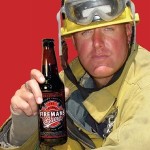Craft Beer and BBQ Pairings

Original article can be viewed here.
By: AARON GOLDFARB
There’s nothing quite like drinking a cold one by a hot grill or smoker. Forget mac ‘n’ cheese or potato salad, a beer is truly the summer barbecue’s best side item. Still, for far too long people have assumed that the beer option most fit for the backyard cookout is one generally described as “ice cold.” Hardly. In fact, many more complex and esoteric craft beer styles work beautifully with barbecued meats and their accompanying sides.
Barbecues are often about simple ingredients prepared simply. Burgers and steaks thrown on a hot grill. Big slabs of chicken, beef, or pork set above a fire and left to cook. These entrees are often seasoned with nothing more than salt, pepper, and maybe, eventually, a little sauce. These bold, basic flavors make pairing beers easy, with ample flexibility for everybody’s tastes. Before looking at pairings, though, we should first consider the flavors that are most prominent in barbecue.
Smoking vs. Grilling
In many parts of the country, “barbecuing” or “having a barbecue” is a catchall term for simply cooking outside. In the south, though, barbecue is a distinct style of food. Basically, it involves any type of meat (though, typically, beef brisket, ribs, pork shoulder or butt, and chicken) slowly cooked over low (180–300 degrees) and indirect heat. “Grilling” is cooking meat (typically burgers, steaks, sausages, or smaller pieces of pork and chicken) over a direct and hot (400 degrees or more) flame. Thus, if you’re taking ten minutes to make a few burgers, you are not “barbecuing,” you are “grilling.” (We won’t get into certain regions that use the term “cookout.”)
This isn’t just a pedantic point, though. Because barbecuing (also known as “smoking”) and grilling impart radically different flavor profiles and textures, they call for radically different beers to match. Grilled meat often has a nice brown or black crust on the outside and will typically need crisper beers to cut through that rich, caramelized profile, while slowly–smoked meat (obviously smoky), may have intense flavors imparted by charcoal or, even better, by any one of a variety of woods (apple, hickory, cherry, etc.) employed to create the fire, calling for sweeter, more flavorful beers.
Slow–cooking also leads to meat that is succulent and tender. Traditionally larger and lower–quality (fatty) cuts are used and slow–cooking is able to break down remaining tough muscle tissue. After hours of smoking, these cuts become moist and began to almost fall apart. We’ll need beers that texturally work with these meats.
Burgers and Beer
While not technically “barbecue,” if you’re cooking outside, it’s still quite likely some ground meat is being thrown on the grill. Like beer, burgers are so versatile. They can be simple (meat and bun) or complex, adorned with any sort of ingredients and toppings you can imagine. They need not even necessarily be beef, as today we’re seeing “burgers” made out of everything from ground lamb to elk and bison, to even salmon.
No matter the meat used, however, you’re still going to be looking at a charred, crusted patty packed with fat and saltiness, topped with even more fat and saltiness (and perhaps funkiness) from cheese, with vegetables and pickles for a little clean freshness and acidity, and condiments like ketchup for sweetness. Perfect for any number of quality pairings.
Steaks and Beer
Like burgers, steak is not “barbecue” per se. But, again, no backyard cookout would be complete without a few nice hunks of cow, rarely seasoned with much more than salt and pepper. Different cuts of steak have different features –sirloins are intensely rich and beefy, porterhouse and T–bones are more delicate and lean, while tri–tips, chuck, and round can be flavorful but tough. Cooking to different doneness is a necessity for getting the most of the various cuts – and the rarer the steak the more you’ll probably want to offset the meaty taste with beer.
Ribs and Beer
To many, a slab of “fallin’ off the bone” ribs are the quintessential barbecue dish. While the ribs of many animals are eaten in world cuisine, in American BBQ, we are typically talking about a rack of pork ribs, either baby back or spare. Depending on the area of the country, these ribs can typically be prepared with merely a dry rub (Memphis) or sauced – or sometimes even both (Kansas City). Texas and certain other places opt for dry–rubbed beef ribs.
Often cooked for ten hours or more, baby back ribs are typically leaner and more tender, while spare ribs are fattier and a lot meatier. All barbecue ribs should be moist and quite flavorful, and necessitate beer pairings that can stand up alongside them.
Chicken and Beer
As opposed to the previous meats, which are typically cooked only one way, the great thing about barbecue chicken is that it can be cooked both ways – grilled or smoked. That means far more possible beer pairings.
Of course, since chicken has a much milder flavor than pork, or certainly beef, we are still going to have to be careful, looking for lighter, simpler beers that won’t completely mask the chicken’s flavor. In many cases, it’s best if you actually try to pair your beer with your chicken’s marinade, rub, or sauce.
Vegetarian Options
Whether or not you identify as a vegetarian, you’re going to want to eat veggies at a barbecue. These could be simple grilled vegetables (like peppers or corn), or any number of notable side dishes (like coleslaw or potato salad). With less aggressive flavors than meat, you should opt for beers that are likewise not as powerful.
Cooking With Beer
One of the best ways to pair beer with BBQ is to actually just cook with it. This isn’t just delicious – but a lot healthier for you too. (Recent studies have found that marinating meats in beer can help kill potential carcinogens that are sometimes created during the smoking/grilling process.)
You can of course try marinating your meat in the beer you’re currently drinking during prep – and the one that you will eventually serve with the meal. In this case, the maltier the better. Likewise, you can soak your wood chips in beer, so that it gives the smoke a hint of the beer flavor, while also slowing the combustion rate of the wood.
During the smoking process, many barbecuers like to continually baste, spray, or even “mop” their meat with liquid, to continue adding flavor. You guessed it – a crisp light beer works splendidly here, as well as apple cider. Beer can also be used as a component in a homemade sauce. A rich stout or Belgian ale can add a flavorful complexity to simple sauces which are often made of essentially just ketchup and sugars.
Finally, perhaps the most amusing way to BBQ with beer is via something called beer-can chicken. An open can of beer – in many cases the cheaper the better – is jammed up the bird’s, ahem, “cavity,” allowing the brew to steam inside the bird, adding flavor and moisture.

